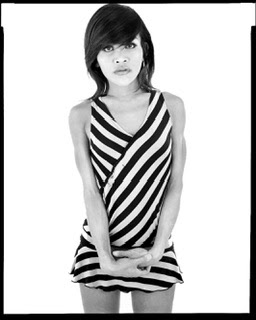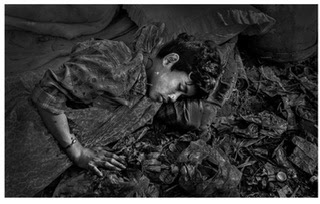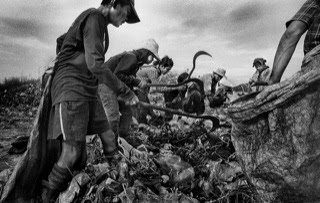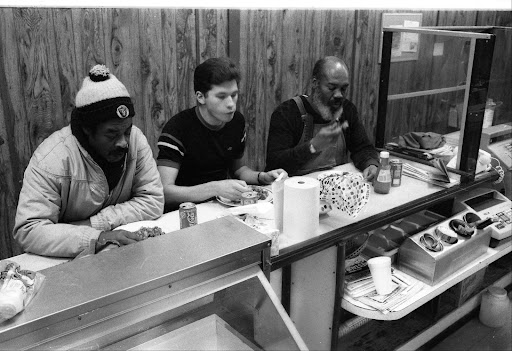
The naked truth
The Guardian, Friday 3 October 2008
Manet's favourite model, Victorine Meurent, has often been dismissed as a drunk and a prostitute. But as V R Main discovers, she was actually an ambitious artist.
Picture the predicament. She is 18, working-class, poor, with a secret ambition to become an artist. He is 30, rich, aristocratic, and a painter. The year is 1862; the setting, his studio in Paris. She is modelling for him, and, as they talk, their ideas merge. Two of the paintings he produces with her will become among the most famous in the world. But the majority of his biographers will ignore her influence. They will say that she was a prostitute and an alcoholic who died young. And, with that damning description, her contribution will be erased from art history.

It was more than a century after Edouard Manet's death that the art historian Eunice Lipton discovered that his model, Victorine Meurent, had actually lived to be 83. And it seems unlikely that she was his grisette - a young woman in a casual relationship with an artist - let alone a prostitute. Manet died at 51 from complications related to treatment for syphilis, then an incurable disease. If there had been a sexual relationship, Meurent would probably have died far earlier than she did.
Most importantly, Lipton realised that Meurent had fulfilled her painting ambitions and exhibited at the 1876 Salon - in the same year that Manet's work was rejected. And Meurent's story has a very recent postscript. It was thought that all her work had been lost but, just yesterday, a museum in Colombes, France, took possession of one of her paintings - another fascinating piece in the puzzle of her life.
The question remains: why was Meurent so dismissed by the painter's biographers? After all, Manet's inner circle seems to have recognised her importance. The artist's close friend Antonin Proust noted in his memoirs that Meurent was Manet's favourite model (she posed for nine of his canvases); Jacques-Emile Blanche, who also knew the painter, was moved to ask, "How often does a chance meeting between a painter and a model decisively influence the personality of his works?"
But while Meurent's contribution was recognised by Manet's friends, her willingness to pose naked made her a notorious figure to the general public, undermining her hopes of being taken seriously. In 18th- and 19th-century art, female nudes were highly appreciated, as long as they represented goddesses or mythical figures. In contrast, the women in Manet's most famous paintings, Le Déjeuner sur l'Herbe and Olympia, both modelled by Meurent, clearly belonged to contemporary Paris. And they weren't idealised goddesses; several critics commented that Meurent's body was far from perfect.
Le Déjeuner is such a strong painting that it inspired me to research its model and write a novel based on what is known of her life. The painting is a feminist work: it presents a powerful woman, offered for male inspection, but not objectified; the model's challenging stare meets the viewer's gaze in a way that thwarts desire. The female figure is disconcerting, exploding the stereotype of an anonymous, passive woman. In both Le Déjeuner and Olympia, Meurent refuses to collude with the spectator; her sexuality is all her own.

Le Déjeuner sur L'herbe, 1863, by Manet
The challenging nature of the Meurent portraits was not immediately appreciated by the public, and at a time when poor women were often forced to sell themselves, a woman whose naked body could be seen in public - albeit in an oil painting - was straight-forwardly perceived as a prostitute. When Le Déjeuner was first exhibited, at the 1863 Salon des Refusés, the public's response ranged from laughter to outright violence: more than one visitor expressed his outrage by hitting the image with a stick. Men would hurry their wives and children past the painting, only to return later to stare at it alone. The critical reception was no different to that of the public. Meurent acquired notoriety and became known by name, unusual for a model at the time.
Writing in the 1940s, Manet's biographer, Adolphe Tabarant, acknowledged that Meurent exhibited at the Salon, but remained as judgmental of her private life as his 19th-century predecessors. He wrote that by the age of 40 she was a wreck, that she had been selling her drawings to her "companions of the night", and had fallen into drunkenness and depravity, before disappearing.
What we know of Meurent's life is fragmented, but the reality is probably quite different from Tabarant's portrait. Born in Paris in 1844, Meurent came from a working-class family - her father is thought to have been an engraver and her mother to have owned a laundry shop. We know that she started modelling for Manet in 1862, but accounts vary as to how they met. It might have been at Thomas Couture's studio, where she apparently worked as a model, or through Victorine's father. Some have speculated that they met on the street near the Palais de Justice: there is a record of her address -17 rue Maître Albert - in one of Manet's notebooks.
In the early 1870s, she is believed to have travelled to America, perhaps engaged by an art dealer to accompany some paintings. By 1875, she had returned to Paris and was attending evening classes at the Académie Julian. Her self-portrait was shown at the Salon in 1876, and after that her work appeared there in 1879, 1885 and 1904. In 1903 she was elected a member of the Société des Artistes Français.
Despite this success, Meurent struggled for recognition, and never had the privilege of proper training - women were not admitted to the teaching studios until the late 1860s. Yet she was ambitious and financially independent. In the years after Le Déjeuner and Olympia, one of her lovers was Alfred Stevens, the Belgian painter, but she never actually lived with a man. For the final 20 years of her life, she shared a house with Marie Dufour, a piano teacher, in Colombes, just outside Paris.
In August 1883, four months after Manet's death, Meurent asked his widow for financial help. She claimed that years earlier he had promised her a small gratuity, which she had refused, on the understanding that she would remind him of his offer if she ever needed to. "That time has come sooner than I expected," Meurent wrote. Madame Manet, who had inherited most of her husband's paintings and was in the process of organising a sale, ignored the letter.

Tabarant wrote that Meurent was a strange girl of many faces, and he was right in at least two senses: she was strange because she was working class and longed to be a painter and because she was a woman and independent. The painting acquired by the Musée Municipal d'Art et d'Histoire de Colombes is Le Jour des Rameaux, which shows a young woman holding a palm leaf, and leaves one in no doubt that it was painted by an accomplished artist. It provides tangible proof that Meurent, marginalised because of her gender, was much more than just a woman with no clothes on. Perhaps the painting, currently under restoration, might prompt a much-needed reassessment of Meurent - the artist.
NOTE* THROUGH THE YEARS THIS BLOG ENTRY HAS RECEIVED SEVERAL EMAILS ASKING ME TO VERIFY THE PHOTOGRAPHS PLACED HERE ARE OF VICTORINE MEURENT. AT THE TIME I MADE THIS ENTRY UP I HAD FOUND AN INTERNET SOURCE THAT CLAIMED THESE PHOTOS WERE LEGIT BUT SINCE THAT TIME I HAVE NOT BEEN ABLE TO FIND THAT SOURCE AGAIN. I AM NOT A 100% SURE THE PHOTOGRAPHS IN THIS ARTICLE (THAT I FOUND ONLINE) ARE OF MANET'S ACTUAL MODEL VICTORINE MEURENT, SORRY FOR THE CONFUSION.


















